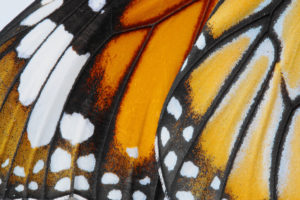As we’ve discussed previously, keeping spaces cool in summer takes a lot more energy than heating them in winter. And some things—such as food and vaccines—must stay cold to remain usable. Climate change can make for a vicious circle. That is, the more global warming, the more demand for air conditioning—and the bigger the carbon footprint. Passive radiative cooling can help.
The idea behind passive radiative cooling is to reflect the sun’s heat back into the atmosphere. This is different from solar panels, which use the sun’s heat to generate electricity.
Passive radiative cooling imitates nature

The reflective surfaces comprise hundreds of nano-layers working together. “That same structure is in the wings of butterflies and fish scales,” according to Tim Hebrink, a scientist who worked on the development of the technology. Together, these layers provide both solar reflectivity and thermal emissivity. That combination enables them to reflect the sun’s heat. Analyzing how nature works and imitating it is a form a biomimicry, as we’ve discussed previously.
A North Market, a grocery store/community center in Minneapolis, is using the SkyCool system in a pilot project. Grocery stores have a high demand for energy to keep food cold, especially in summer. Refrigeration is one of their greatest expenses, so the savings are most welcome. They may even help mitigate rising food prices.
SkyCool arrays work by cooling a fluid that moves below the panels and is pumped through refrigeration systems. The cooling helps reduce the run time of motors in the refrigeration system to reduce electricity consumption. All told, the SkyCool system can reject heat at about 100 watts per square meter, saving between 450 and 550 kilowatt-hours per square meter every year—twice the average production of a solar panel.—Brooks Johnson, Star Tribune, 12 March 2022
Because they provide different benefits, a facility might use both solar panels and passive radiative cooling. The latter could provide energy-efficient refrigeration while the former keep the lights on.
